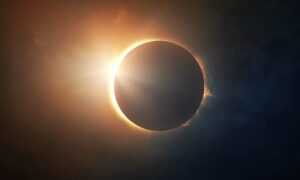Over the past few years, one of the most visible stars in our sky, Betelgeuse, has been behaving strangely.
The Orion constellation’s red supergiant rapidly decreased in 2019, raising questions among scientists about if it was about to blow up.
Scientists now predict that on December 12, it will almost disappear from view, albeit only briefly.
Similar to how the moon eclipses the sun, scientists believe that an asteroid known as 319 Leona will come by and block Betelgeuse’s view from Earth for up to five seconds.
Astronomers will have a chance to gather important information about Betelgeuse, which is pronounced like the Tim Burton character Beetlejuice, which may aid in the understanding of how planetary systems arise.
“This is very exceptional. Basically, it’s a once-in-a-lifetime opportunity,” astrophysicist Miguel Montargès of the Paris Observatory, told Business Insider on Thursday.
Stars are always in front of asteroids. However, they usually shade out the star’s light entirely due to their size. Regarding 319 Leona, its size will be ideal for leaving an eclipse known as the “ring of fire” that is visible from Earth.
This means that while the asteroid will block the greatest quantity of Betelgeuse’s light, some of it will still be able to pass through, giving Earth-based observatories a glimpse of some of the star’s dimmer observatories.
For those who study stellar physics, this is beneficial. According to report, no observatory on Earth can currently get this data without the asteroid’s assistance.
According to Montargès, it is hoped that the occultation will reveal details about the convective cells of the dying star, which are responsible for the movement of hot, charged gas around it.
And that important because, according to Montargès, it can explain how planetary systems like our own are created.
The star’s material may someday give rise to a new solar system. “It’ll tell us what is the physics behind red supergiants and how they are launching their stellar wind,” the speaker continued.
In order to collect as much data as possible during the event, Montargès and his colleagues are organising a group of roughly 80 amateur astronomers from all over Europe who will point their telescopes at the sky at night.
“If we work well during this campaign on if the weather is with us, we should be able to have perhaps an image of the surface of the star in the visible,” said Montargès.
“From that we can deduce the characteristics of convection and determine if it can participate in launching the wind of the star,” he stated.
You must be within an extremely narrow region, roughly 60 kilometres (37 miles) wide, in order take part. This area should travel across southern Europe, passing through Turkey, Greece, southern Italy, southern Spain, and Portugal before crossing the Atlantic and arriving at the southernmost tip of Florida.
The International Occultation Timing Association (IOTA) website allows you to determine if you are in an ideal spot to take in the event.
The first three stars that make up Orion’s Belt can be found to see Betelgeuse with the naked eye. Then, Betelgeuse will appear as a reddish star to the left.
It would take a very strong telescope to discern that much detail in the distant star, so observers shouldn’t expect to see the ring of fire up close. However, they can contribute to the scientific discovery by using their telescopes to record the star’s fading.
For scientific purposes, however, you should record the occurrence with a camera that has an exposure period of no more than 50 milliseconds and add a red, green, or blue filter to your observatory.
It is essential for astronomers to accurately record their latitude and longitude, ideally with a millisecond accuracy. This can be done by coordinating the footage using specialised apps or by utilising a GPS-controlled time inserter.
IOTA asks that you convey your observations with the local organisations that are listed on their website and are in charge of monitoring the event.
The event will be streamed live online by the Virtual Telescope Project starting at 8 p.m. ET on December 11 for those who are unable to make it in reality.
- Top 5 Health Insurance Stocks to Add to Your Portfolio - July 26, 2024
- 7 Reasons Edamame is Great for Your Health - July 26, 2024
- 2024 Paris Olympics: How Many US Athletes Are Competing? - July 26, 2024





